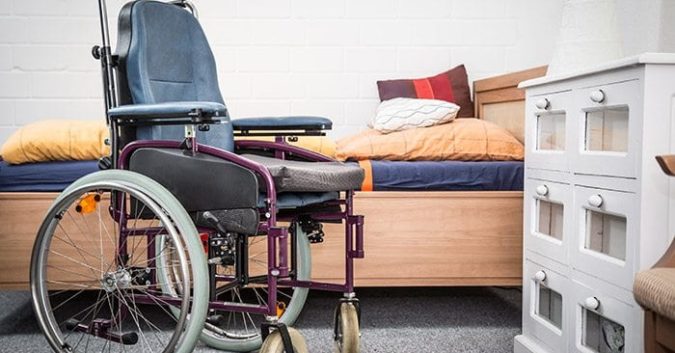Here’s a well-known truth: Americans are living longer than ever before. In fact, the number of Americans age 65 or older increased tenfold in the last century. In a 2013 Pew Research Center study, 69 percent of participants said the ideal length of life was between 79 and 100 years; 8 percent even said it would be ideal to live to be 101 or older. How is all of this possible? Many of us are taking vitamins and supplements, thinking positive, going vegan, and exercising regularly to extend our lives.
You will be hard-pressed, however, to find many Americans who are eagerly looking forward to someday living in a nursing home. They have a bad rep. And, rightly so. Moving into a nursing home is even considered to be the worst case scenario for a large percentage of the population. This creates an obvious disconnect in our society. We’re all fighting so hard to live longer, but no one wants to end up in long-term care.
Why? Well, for many, nursing homes represent the loss of freedom (in many different ways) and, unfortunately, the beginning of the end. There’s also a legitimate fear of being taken advantage of and abused, with over 30 percent of U.S. nursing homes receiving citations for abuses.
Are the Tides Turning? Person-Centered Care Comes to the Forefront
Some of the better nursing homes, though, have changed their core focus to person-centered care — giving hope to many of us who aspire to live full, long lives.
“Person-centeredness is a step in the direction of a larger organization culture change,” said Ruta Kadonoff, director of the Pioneer Network, which pushes for transformation of the institutional culture of nursing homes. “Rather than designing what we do around what works for the institution and the staff, we look at what works for the person — individualizing, responding to each person’s needs.”
One of these nursing homes was recently highlighted in Forbes for its commitment to allowing our elders to age with dignity. St. Camillus Health Center in Whitinsville, MA started making the move to person-centered care about a decade ago when it was awarded a quality improvement grant, funded by the Centers for Medicare and Medicaid Services. Changes they made included:
- Consistent assignments for employees so they were working with the same residents every day. There was a lot initial skepticism from the staff, who had previously been taught not to get too close to people.
- How deaths are handled — after a resident is deceased, they are now covered with a special quilt with names of residents who have died. They also old a yearly dinner for families to come back and celebrate their loved one’s life.
- Varied morning routines, instead of making every resident follow the same schedule. Now residents are asked what they want to do when they wake up (sit and drink coffee, take a shower, etc.) and are given options for breakfast.
The overarching theme is that nursing home residents are able to continue to make their own decisions and are given a much better sense of ownership. Their care is guided by individual values, goals, and preferences. Residents are able to continue to find meaning in their lives rather than resigning themselves to the whim of sometimes untrustworthy caretakers.
For-Profit Nursing Homes Result in Slow Changes
Several nursing homes from around the country have toured St. Camillus to learn from its example, but a 2013 survey of nursing homes on their culture change practices shows that just 13 percent “had completely changed the way the [nursing home] cared for residents.”
Barriers to change include misconceptions about cost (research shows person-centered care is more cost-effective) and nurses giving up control to allow CNAs more input. A major barrier, however, is the corporatization of nursing homes. Right now, about 70 percent of nursing homes are operated by for-profit companies, and most own multiple facilities. Often this means that what’s good for patients is not good for the company’s bottom line.
“The greater the distance between the ultimate decision makers and the person living or working at the home, the harder it is to individualized and person-centered,” said Kadonoff.
An Industry Desperate for Help
By the year 2060, there will be about 98 million people who are 65 or older in the U.S. Older individuals are also expected to make up a larger percentage of our population in the coming years, especially as the baby boomer generation ages. People 65+ were 14 percent of the population in 2013, but are expected to be 22 percent by 2040.
Our population is growing, people are living longer, and it is critical that changes are made in nursing homes before the problem becomes even worse. We should not be afraid to age because we think that greedy corporations will allow substandard care and abuse to continue in our nation’s nursing homes.
